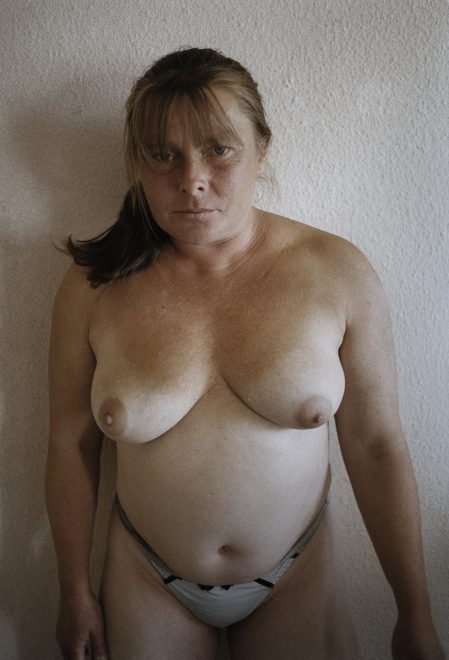Body of Desire
An interview with Helga Theilgaard
by Peter Stanners, The Murmur

The Murmur – November 2014 issue
BODY OF DESIRE: HELGA THEILGAARD
Interview with Helga Theilgaard about her nude portraits of prostitutes
By editor Peter Stanners
The Murmur: Where did you get the idea for the photo series?
It started when I moved into a photo studio on Skelbækgade in Vesterbro, near the red light district, in 2010. I noticed girls wandering about during the days and nights from the studio. I could see they had lots of customers, but I wanted to know more. There was so much more that I couldn’t see.
Most of my ideas are built on this curiosity and of wanting to know more about an environment. A few years ago I made a project about the homeless and I could use some of the same contacts to meet the prostitutes. It requires a lot of research and talking to people, listening to them and trying to understand their stories and eventually see if they wanted to participate.
The Murmur: Was it hard finding people who would participate?
It takes a lot of time. Finding willing participates in these environments is difficult. Many didn’t want to at first, because not even their friends knew what they did. It was a secret job. So I let them hide their faces if they wanted. What I wanted to show was their bodies, which is their tool, after all, and which reflects our dreams and longing for lust and desire and our need to be close to people. Lots of my projects have worked with the body. Naked people are interesting; there is more fragility and naked personality. Clothes are just a mask.
But getting people to agree always requires creating a safe space. People rarely find it relaxing to have their portrait taken. I have photographed many different people from all sorts of levels of society – from kings to prostitutes. The fact is it doesn’t matter who they are, you just have to look them in the eye and understand who you are facing. That’s how you create this safe space.
The Murmur: What makes a good portrait?
I trained with the Royal Court Photographer, Rigmor Mydtskov, who really worked hard to draw out people’s souls. A portrait isn’t interesting if it just shows a smile. Human beings have so many stories to communicate, and if you manage to show their sorrow and happiness and the stories they carry, you can communicate a feeling. That’s how I work.
The Murmur: Many of your subjects are vulnerable. How do you make sure you’re not exploiting them?
I can spend hours talking to people and creating a safe space before they give their permission. But I take my time, because I need them to know that I understand how difficult it is to be photographed. I also make sure they understand that the photograph will be exhibited in a public space with other portraits, which may have an effect on their lives if they are recognised. I’m not interesting in just exposing people for the sake of a project.
